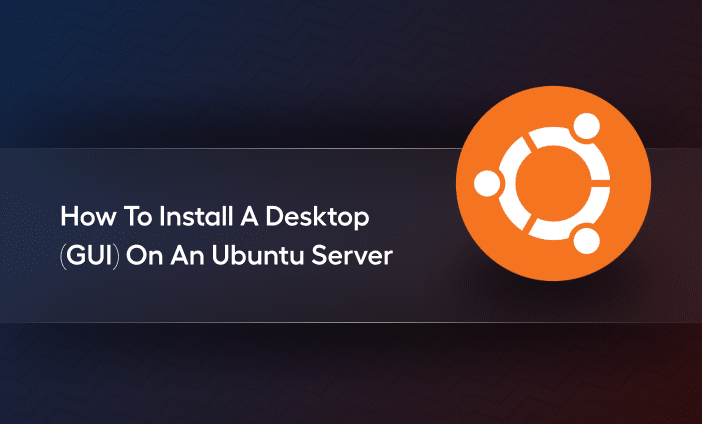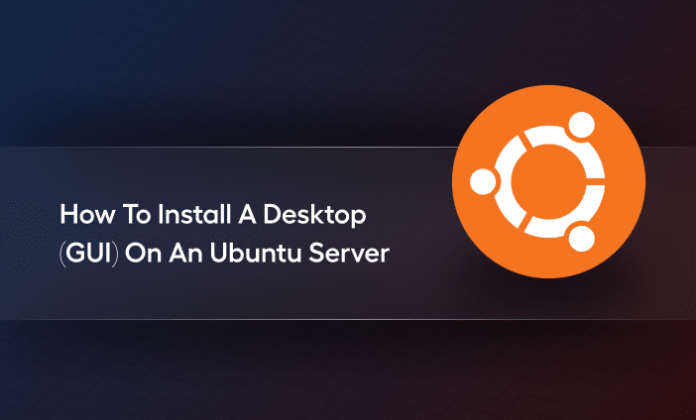
The Ubuntu Server is famous for command-line interface, optimized for performance and efficiency. However, there are situations where a graphical user interface (GUI) can be beneficial, especially for those transitioning from desktop environments or managing specific applications. This guide will walk you through the process of installing and managing a GUI on Ubuntu Server, exploring the pros and cons, and providing best practices for optimal performance.
Understanding Ubuntu Server and GUIs Ubuntu Server is designed to run without a graphical interface, focusing on command-line operations for optimal performance and resource utilization. However, adding a GUI can provide a more familiar environment for certain tasks and users.
Why Install a GUI on Ubuntu Server?
- Ease of use for newcomers to Linux
- Simplified management of certain applications
- Remote desktop access for GUI-dependent tasks
- Graphical system monitoring and management tools
Popular GUI Options for Ubuntu Server
- GNOME: Full-featured, modern desktop environment
- Xfce: Lightweight and fast, suitable for older hardware
- MATE: Traditional desktop experience, fork of GNOME 2
- LXDE: Extremely lightweight, ideal for minimal resource usage
Installing a GUI on Ubuntu Server We’ll focus on installing GNOME, as it’s the default Ubuntu desktop environment:
- Update your system:
- Install the Ubuntu desktop package:
- Install a display manager (e.g., GDM3):
- Reboot your server:
For a lighter alternative, you can install Xfce:
Managing the GUI
- Start the GUI:
- Stop the GUI:
- Enable GUI at boot:
- Disable GUI at boot:
Performance Considerations Adding a GUI to Ubuntu Server can impact performance
- Increased resource usage (CPU, RAM, storage)
- Potentially slower boot times
- Additional software and dependencies to manage
To mitigate these issues
- Choose a lightweight desktop environment like Xfce or LXDE
- Disable unnecessary services and startup applications
- Use the GUI only when needed, boot to command-line by default
Security Implications
While installing a GUI on Ubuntu Server can introduce additional security considerations:
- Increased attack surface due to more installed packages
- Potential vulnerabilities in graphical applications
- Risk of unauthorized access through remote desktop protocols
Enhancing security in Ubuntu Server GUIs
- Keep your system updated regularly
- Use strong authentication for GUI login
- Limit remote access to the GUI
- Implement proper firewall rules
Best Practices
- Use minimal installations: Only install necessary components
- Regularly update and maintain your GUI and associated packages
- Monitor system resources to ensure optimal performance
- Use SSH with X11 forwarding for occasional GUI application use
- Consider using a VNC server for remote GUI access when needed
Troubleshooting Common Issues
- Black screen after installation: When facing this issue. You should check graphics drivers compatibility, After that you can try booting in recovery mode and reconfiguring graphics
- High resource usage. If you don’t have a powerful computer, you can opt for lightweight alternatives like Xfce or LXDE. Disabling unnecessary services and startup applications can also go a long way.
- GUI not starting automatically, when this happens, it is important to verify that the display manager service is enabled
- Slow performance: • Increase server resources (RAM, CPU) • Optimize GUI settings for performance
Why is this Important?
Installing a GUI on Ubuntu Server can significantly impact how you interact with and manage your server. While it offers benefits like ease of use and familiar interfaces, it’s crucial to understand the trade-offs in terms of performance, security, and resource usage. By carefully considering your needs and following best practices, you can strike a balance between the command-line efficiency of Ubuntu Server and the user-friendly nature of a graphical interface.
In summation, adding a GUI to Ubuntu Server is a powerful way to enhance its functionality and accessibility, particularly for users more comfortable with graphical interfaces. However, it’s essential to approach this decision with a clear understanding of the implications for performance, security, and system management. By choosing the right GUI, following best practices, and maintaining a security-conscious approach, you can successfully integrate a graphical interface into your Ubuntu Server environment without compromising its core strengths.
Related Articles
How to Install GUI on Ubuntu Server [Beginner’s Guide]
How to Install GUI on Ubuntu Server in 4 Easy Steps
More Articles from Unixmen





